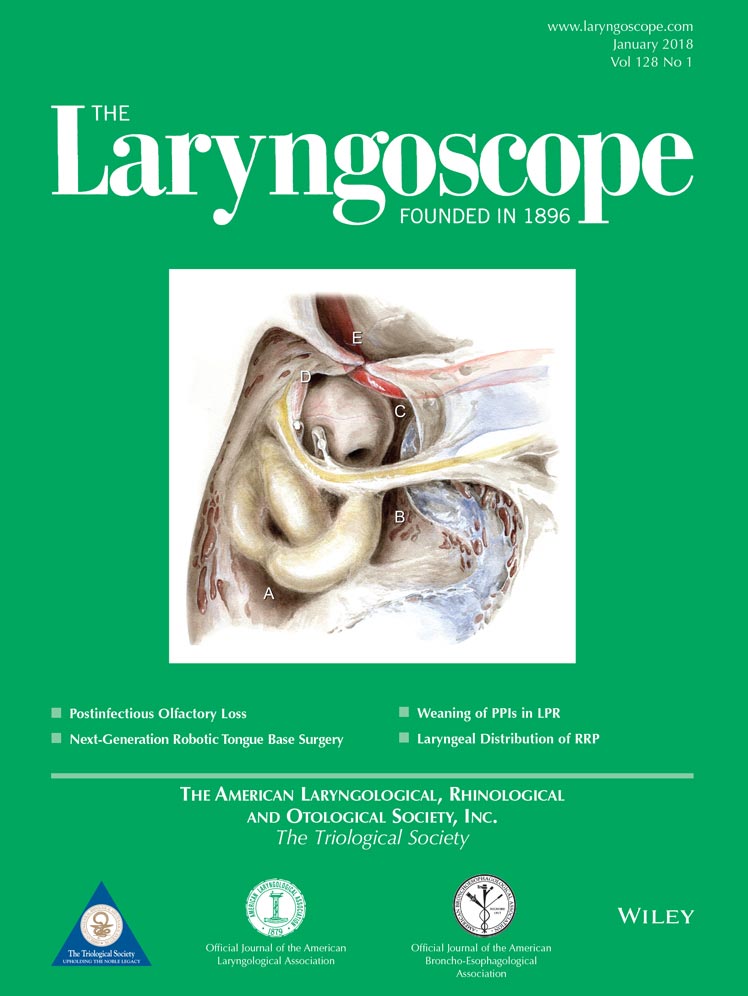Postinfectious olfactory loss: A retrospective study on 791 patients
This research was supported by a grant from the Deutsche Forschungsgemeinschaft to t.h. (DFG HU411/18-1) and the Swedish Foundation for Humanities and Social Sciences to M.L. (M14-0375:1).
The authors have no other funding, financial relationships, or conflicts of interest to disclose.
Abstract
Objectives/Hypothesis
Postinfectious olfactory loss is among the most common causes of olfactory impairment and has substantial negative impact on patients' quality of life. Recovery rates have been shown to spontaneously improve in most of patients, usually within 2 to 3 years. However, existing studies are limited by small sample sizes and short follow-up. We aimed to assess the prognostic factors for recovery in a large sample of 791 patients with postinfectious olfactory disorders.
Study Design
Retrospective cohort.
Methods
We performed a retrospective analysis of 791 patients with postinfectious olfactory loss. Olfactory functions were assessed using the Sniffin' Sticks test at the first and final visits (mean follow-up = 1.94 years).
Results
Smell test scores improved over time. In particular, patient's age and the odor threshold (T), odor discrimination (D), and odor identification (I) (TDI) score at first visit were significant predictors of the extent of change. The percentage of anosmic and hyposmic patients exhibiting clinically significant improvement was 46% and 35%, respectively.
Conclusions
This study provides new evidence within the postinfectious olfactory loss literature, shedding light on the prognostic factors and showing that recovery of olfactory function is very frequent, even many years after the infection.
Level of Evidence
4. Laryngoscope, 128:10–15, 2018




